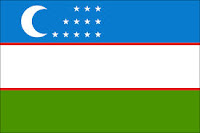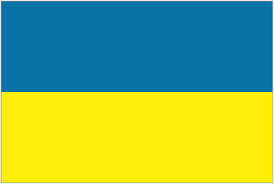 TASHKENT NON
TASHKENT NONI've wanted to feature a breakfast from Central Asia for some time now. However pinpointing what's for breakfast there has been extremely tricky. Resources on-line are few and far between and general articles on cuisine naturally gloss right over breakfast. Lucky for me I realized that I had a good friend that visited this part of the world and could provide some great insight.
The Uzbek word for breakfast, Nonushta, literally means "eat bread". And according to my sources, breakfast is a simple meal of tea (green or black depending on region) and bread. But not just any bread, Non bread.
Non (similar to Indian Naan bread) is a beautiful round bread found all over Central Asia. It is cooked in a Tandyr or Tandoor oven and is central to every meal in Uzbekistan. Considered holy, it is never to be cut with a knife and is instead torn into pieces at the table. It is also traditional that this bread always remain face up on the plate.
There are several varieties of Non served in Uzbekistan but I decided to go with the Tashkent variety which is apparently lighter, fluffier and overall less dense than the Samarkand variety.
Key to making the beautiful designs on these breads is a tool called a Chekich. This special handmade tool has a wooden handle with metal bars the size of small nails protruding out in geometric designs. It's used to stamp the decorative centres that Non are known for. Of course, I didn't have one of these handy. (Although it would be an excellent gift idea. *ahem* Hint, hint.) So I improvised my own designs with the help of a couple of chopsticks...
Fresh home-made bread is always good. The enticing smell, the butter melting on the still warm crust, and the knowledge that you made it all out of a simple bag of flour! So it didn't surprise me that Tashkent Non was delicious. Although cooked similar to Naan, the Non was less stretchy and more fluffy. It was the perfect receptacle for toppings, and while I tried to stick to traditional ones like butter, honey and yoghurt, Jon went all out and slathered his with Speculoos. (A breakfast spread made out of cookies from the Netherlands.) Breakfast fusion cuisine at it's finest!
The Verdict:
For Ease of Preparation:
For Degree of Separation:
For Guestability:
Homemade bread always gets high marks with guests! It is the ultimate welcome food.
For Sustainability:
For Costability:
Non is literally only made of four ingredients: water, yeast, flour and a little salt.
For Overall Appeal:
It's always great to find new bread recipes that are foolproof and I am happy to add Tashkent Non to my collection. However it didn't really feel like stepping outside of the proverbial "cerbeal box".
Another more exotic breakfast tradition in Uzbekistan is observed at weddings and funerals. (I featured a video of it on my Youtube Breakfast post.) The host family will make Oshi Nahor or morning plov (the national Uzbek dish of rice, carrots, onions and meat) and all the men of the village are invited to attend. Men in Uzbekistan pride themselves on their Plov recipes but for this epic meal a master of the plov, an Oshpaz, might be brought in. Breakfast is served between 6 and 9 am and can feed hundreds of people. During wedding season men may be expected to attend several Oshi Nahors in a morning! Polite no RSVP's are not an option...









